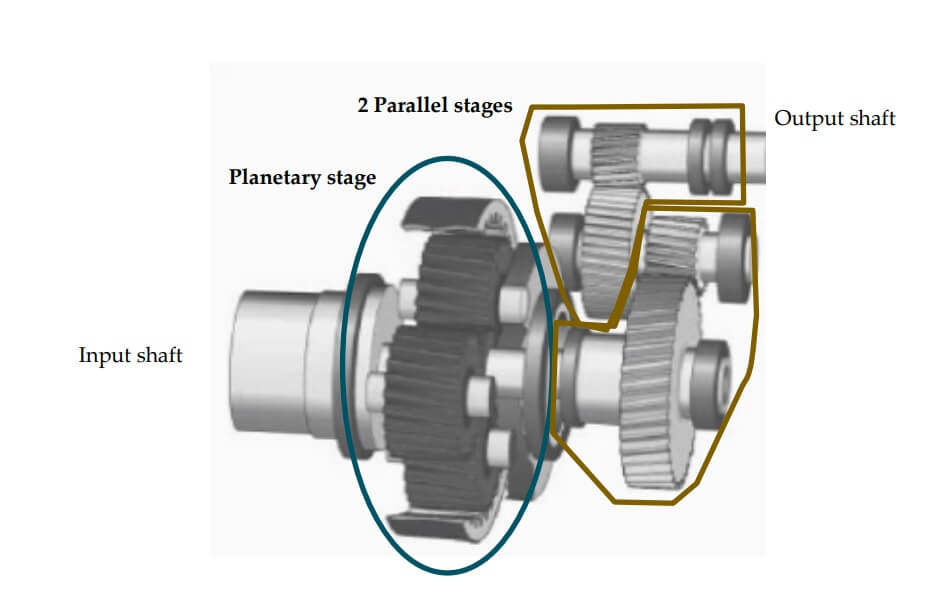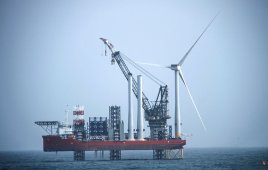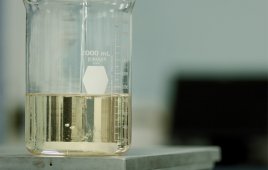Jan Ukonsaari, Vattenfall, R&D
Niklas Bennstedt, Autoinvent
Foreword
The wind turbine gearbox is the one component most prone to cause complications. The costs for maintenance and replacement of gearboxes, along with the costs caused by production losses due to non-functioning gearboxes, constitute a large share of the expenses of operating wind power plants. The project “Maintenance effect on present and future wind turbine gearboxes” analyzes three types of gearboxes, and how different conditions affect their reliability, that is, the likelihood of reaching a certain life. The results can help identify optimal maintenance methods as well as future gearbox designs, to improve the reliability of wind turbine gearboxes.
“Operation and maintenance” is one of three main research areas in the research program Vindforsk IV. This project has been a part of Vindforsk IV, contributing to its objective to provide useful knowledge and innovations to the wind industry. The financiers of Vindforsk IV are The Swedish Energy Agency together with companies in the wind industry, through Energiforsk AB. The project has been carried out by Jan Ukonsaari (project leader) and Niklas Bennstedt at Vattenfall Research and Development. The reference group has contributed with valuable guidance and comments. Reference group members have been: Hans Sollenberg (OX2), Göran Dalén (Dalen Power), Anders Södergren and Tomas Östberg (Recondoil), Per Anders Östling (Fred Olsen Renewables) Susann Persson (Jämtkraft) and Niklas Bennstedt (Autoinvent). Stockholm, May 2016
Summary
Wind power provides a significant and increasing portion of the electrical network’s power. Improved competitiveness has led to a decrease in wind power production cost. Furthermore, a potential total cost saver can be found for gearboxes by decreasing the number of repairs and exchanges which today stands for a substantial part of the maintenance cost. For an end user, it is a challenge to efficiently decrease this cost.
In this study, a tool is presented that allows calculating of reliability, which is the probability to reach a certain life, for gearboxes with various amounts of available information. More information will provide for more correct results.
Here, the tool is used for calculating the effect on reliability with different factors such as oil cleanliness (number of particles in the oil larger than a certain size) and oil viscosity which can be altered by maintenance measures. The tool is also suitable for an objective judgment in the selection of a gearbox for actual running conditions.
Reliability for a typical 2-MW gearbox including its first planetary stage and following two parallel stages (see figure) has been evaluated for a number of cases such as changes in oil cleanliness in terms of particle content and oil viscosity, of which the latter influence the oil film thickness in bearings and gears.
Different load levels as well as the total number of run hours at nominal load were examined to show the influence of the machine or site capacity factor. A comparison of an optimized version of the Typical gearbox and a Future gearbox built according to a simpler patented concept without planetary stages has been made.

The results show that the oil cleanliness is important for reliability at nominal load, corresponding to 20 years of site service, for the planetary stage but less important for the parallel stages in the studied gearboxes
Results show that the oil cleanliness is important for reliability at nominal load, corresponding to 20 years of site service, for the planetary stage but less important for the parallel stages in the studied gearboxes.
Good oil cleanliness is essential if the planetary stage is lubricated in an oil bath and not supplied by filtered oil. A similar situation prevails for the oil viscosity, oil temperature, and number of full load hours. Low oil viscosity, high temperature, and many high-load hours have a negative effect on component life and reliability.
The number of repairs or gearbox exchanges varies between 0.4 to 1.5 for each gearbox during 20 years of operations dependent on the running conditions for the studied Typical gearbox. Corresponding figures for the Optimized planetary gearbox is 0.3 to 1.3.
The Future gearbox shows high reliability for variations in running conditions and thus requires lower demands on maintenance. The number of repairs or gearbox exchanges is estimated to 0.15 per gearbox during 20 years under the investigated running conditions. The high reliability is because of the possibility to choose bearings for varying running conditions and that there are fewer critical components.
In a planetary stage, the space for placing strong long life bearings can be limited due to the gear dimensions which leads to short component life and consequential low reliability. That is a facto for the studied planetary gearboxes. This study shows examples of reliability figures for gearboxes under given conditions and provides an insight into how specific gearboxes in wind power can be studied. The method or tool can be used for studying the effect of maintenance but also for setting up suitable requirements and fulfillment of them at purchase. Proposals for how to use the tool is presented and future use of other technologies such as hydrodynamic bearings.
For the rest of the article: https://goo.gl/qCi9pv
Filed Under: Gearboxes, O&M



